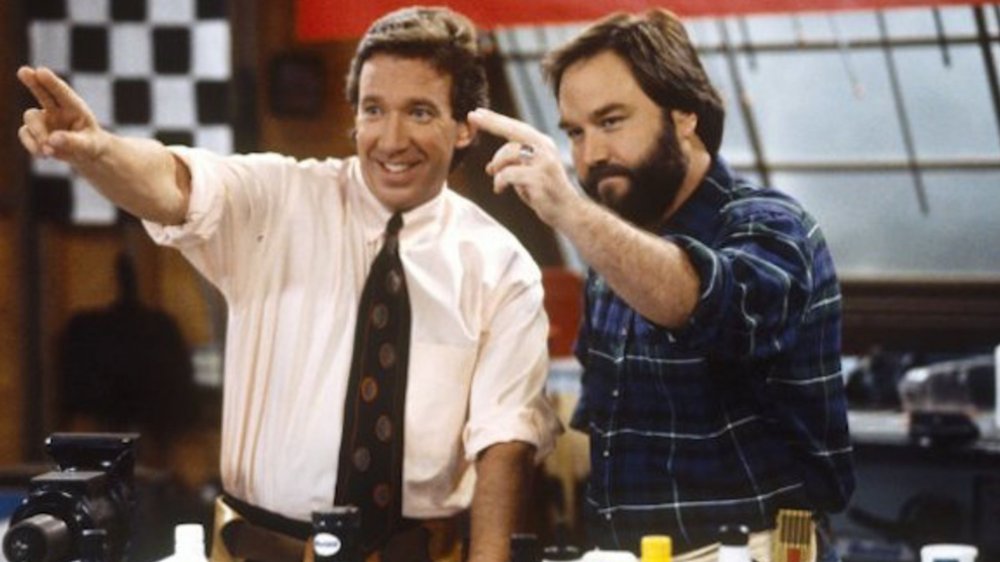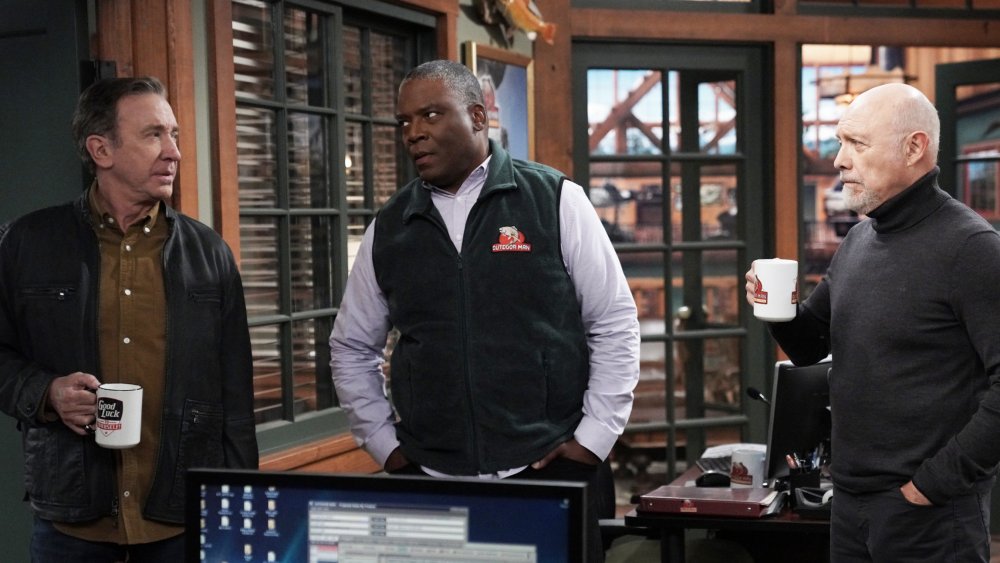The Truth About Home Improvement's Tool Time Audience
Home Improvement was one of the most beloved sitcoms of all time, and regular viewers will only ever have one answer to the question, "Does everybody know what time it is?" That answer, of course, is Tool Time, the show-within-a-show hosted by Tim "The Tool Man" Taylor (Tim Allen) and his slightly acerbic sidekick, Al Borland (Richard Karn). Home Improvement got a lot of comedic mileage out of its Tool Time segments, which often opened episodes, but if you're anything like us, you may have wondered from time to time just from where the fictional show's live studio audience came. Were they paid actors? It seems possible, as members of the audience would sometimes interact with Tim and Al. Or, were they members of Home Improvement's actual studio audience? Did the series even have a live studio audience, or did it employ a laugh track?
The answer: Home Improvement was indeed shot before a live studio audience and, for the Tool Time segments, a portion of that audience was used (via Deseret News). In fact, in an era when Friends and Seinfeld (both of which were also shot in front of studio audiences) were in full swing, tickets to Home Improvement tapings were often the hottest commodities in L.A. for one simple reason: If you happened to be sitting in the section that subbed in for the Tool Time audience, you might actually appear on the show (also, because Allen would often launch into comedic rants which were decidedly not suitable for the series' family audience, but that's neither here nor there).
In fact, the only real misrepresentation was in the size of the audience. In a special aired after Home Improvement's final episode, the camera actually panned around from the set to show the show's studio audience, and it was massive — a far cry from the handful of rows shown in the Tool Time segments.
Do sitcoms still use live studio audiences?
The show-within-a-show aspect of Home Improvement gave it the opportunity to use its studio audience in a way that few sitcoms ever had, but taping in front of an audience carries advantages beyond just prompting home viewers to laugh. Sitcoms that are taped this way almost always employ multiple tapings to get the best takes, and if a joke is falling flat or the audience otherwise responds unfavorably to something that's scripted, it gives the writers and producers a chance to course-correct.
The advent of the laugh track meant that even single-camera shows that were obviously shot on sound stages could mimic the effect of an audience chortling along with the action onscreen, but, for the purposes of fine-tuning each episode and maintaining an authentic, stage play-like presentation, many sitcoms, even today, choose to shoot before a live studio audience. Recent hit shows like The Big Bang Theory, 2 Broke Girls, and Mom have carried on this tradition, even though it would likely be logistically simpler (and cheaper) to simply plug in a laugh track.
Even Allen's more recent, long-running series Last Man Standing, which has aired for eight seasons and counting on Fox, is taped before a live audience. As of this writing, large public gatherings are still limited due to the coronavirus outbreak, but the next time you happen to be in L.A., it's usually pretty easy to get tickets to tapings by simply requesting them online.

